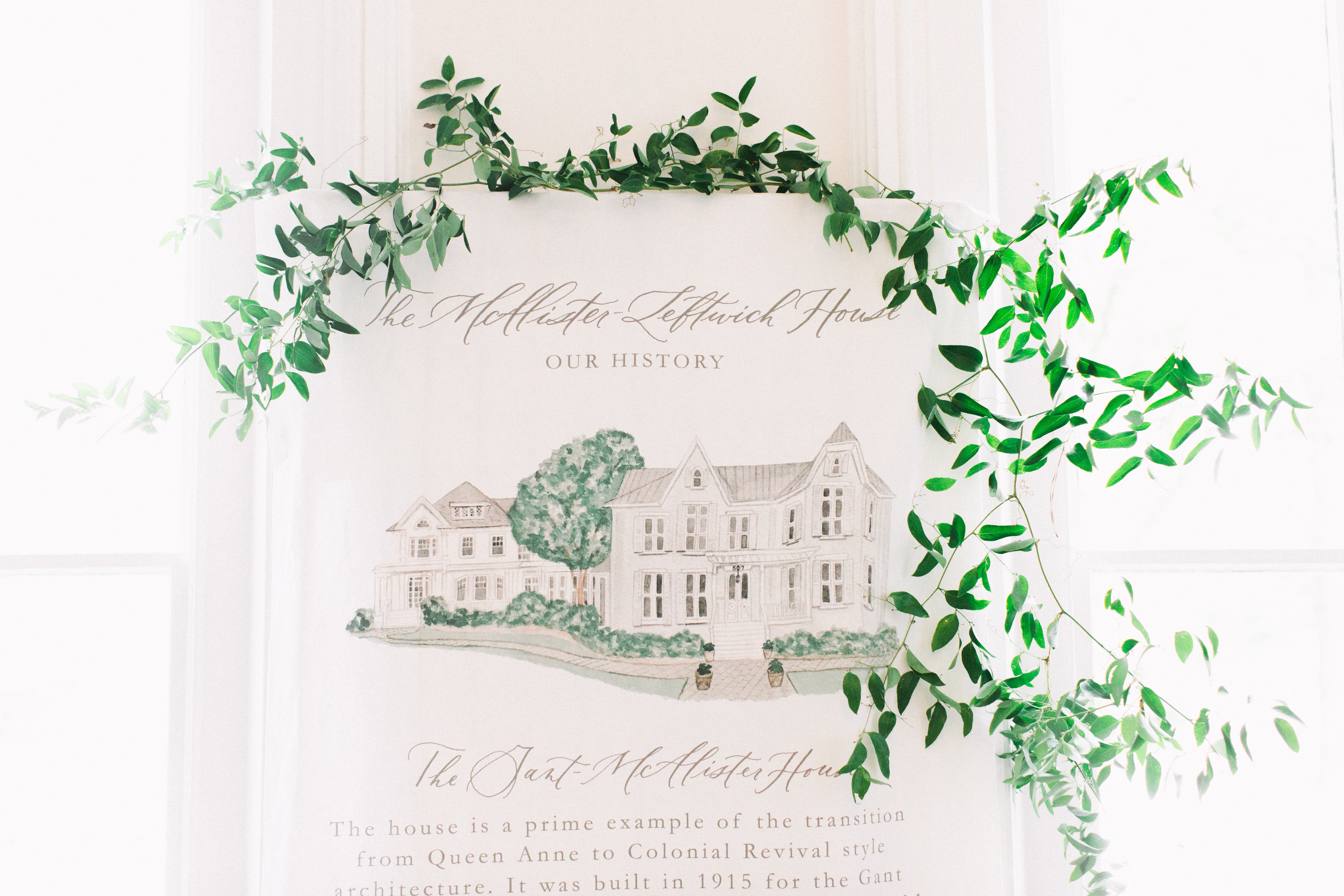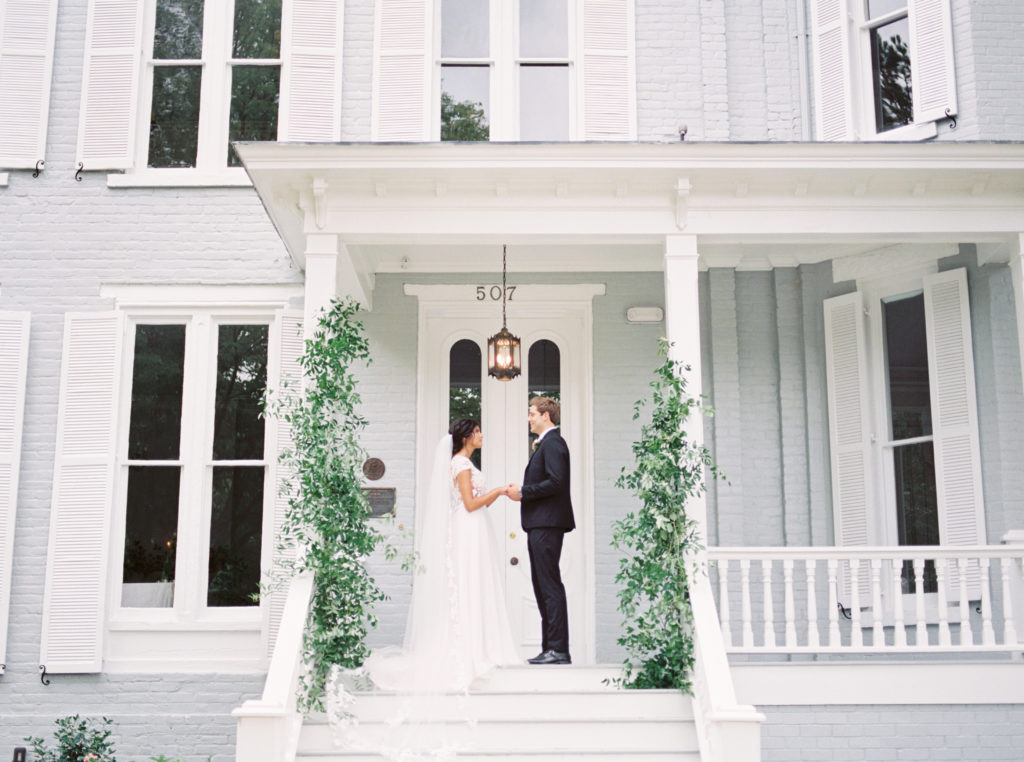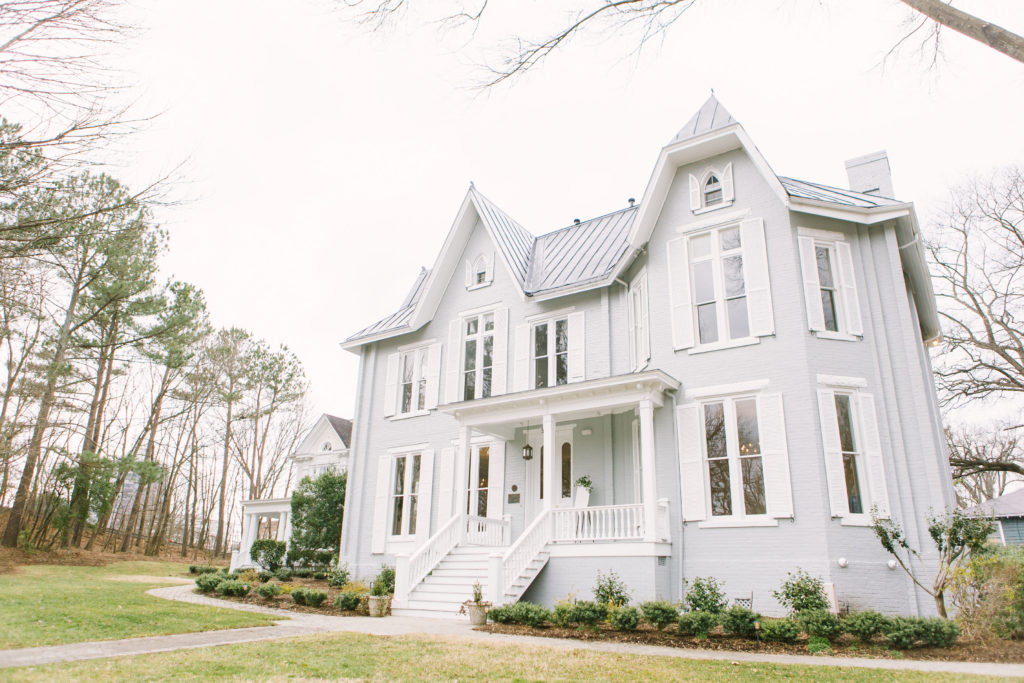
The History of the Dixon-Leftwich-Murphy House
March 12, 2019
Today, we’re back to share the history of the Leftwich House and the families who lived here! If you missed it, you can read all about the history of the McAlister House here.
The Dixon-Leftwich-Murphy House is one of three notable Gothic Revival-inspired designs in Greensboro. Nurseryman Martin C. Dixon built the house on a large parcel of land in the northernmost section of the city in 1875. The house sold in 1887 to Colonel A. H. Leftwich. In 1903 the house was purchased by T. J. and Annie Leftwich-Murphy. Murphy was twice mayor of Greensboro. In more recent years, the house has served as apartments, an antique shop, an office space, and now, a special event venue.

Dixon
Martin C. and Mary A. Dixon moved to Greensboro prior to 1867. Martin owned a mercantile store in Lawsonville in Rockingham County, dealing in dry goods, groceries and confectionaries. By 1875 Dixon had established himself as a gentlemen’s clothier, his business located on Elm Street in Greensboro. He later opened a nursery on what was known as the Donnell property north of Greensboro. This enterprise, known as the Piedmont Nursery, was owned by his wife Mary Dixon. She purchased the 8 1/2 acre tract from Donnell in 1880.
Martin and Mary built their brick home to accommodate their growing family. The exact date of construction is uncertain and the builder is unknown, however, it can be assumed the home was finished around 1875. Mary purchased the land that the home was built on in July of 1869 for $325. By 1880, the Dixons had at least seven children ranging in age from 10 months to fifteen years old that lived in the home. The Dixons continued to live in the house until 1885 or 1886 when Martin Dixon died. For a short time, until her death in December 1889, Mary operated a boarding house on North Elm Street.

Leftwich
Annie S. Leftwich purchased the old Dixon place in May 1887 for $4,000. Her husband Col. Alexander H. Leftwich (1847 – 1903) was president of Greensboro Gas Light Company, located on Forbes Street, which is now part of Church Street. The Leftwich family had five children and by the time they moved to Greensboro in 1887 or 1888, Col. Leftwich had ventured into the tobacco business. The Leftwich’s may have maintained a residence in Baltimore as well as in Greensboro. Annie Leftwich died in March 1900.

Murphy
Leftwich’s daughter Annie married Thomas J. Murphy in 1902. Thomas Murphy received his education at Davidson Collge and graduated from 1899 with a law degree from Columbian University (now George Washington University). He began practicing law in Greensboro in 1901. In 1903, Col. Leftwich defaulted on a mortgage and the house was sold at public auction. The Leftwich children were the last and highest bidders at $2800. Thomas Murphy served as their agent for the sale. Each of the five children owned a one-fifth undivided interest in the house along with their spouse. Later that year Thomas Murphy was appointed the legal guardian of Clem Leftwich, the youngest who was eighteen years old, and Col. Leftwich died a short time later.
Murphy was the reading clerk of the North Carolina Senate in 1903 and in 1905 he was elected mayor of Greensboro, serving two years. In 1903 he was elected to the State Legislature from Guilford County. In 1923 the house was auctioned according to a deed of trust with the City of Greensboro in order to satisfy a debt with the city. The City of Greensboro was the highest bidder at $9500. The Murphys continued to live in the house and in 1940 Thomas Murphy died. In 1943 Annie, who was working in real estate, purchased the house back from the city for $3000. Annie Murphy later died in 1953 and M.C. Crawford converted the house into seven apartments. In 1981 Carl I. Carlson, Jr. and his wife bought the house and converted it into an antique store.